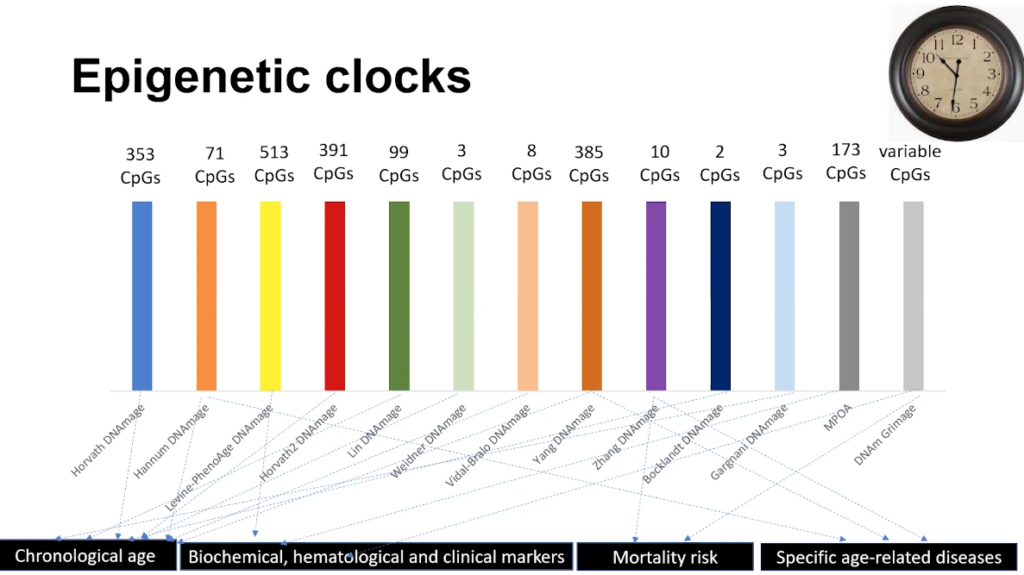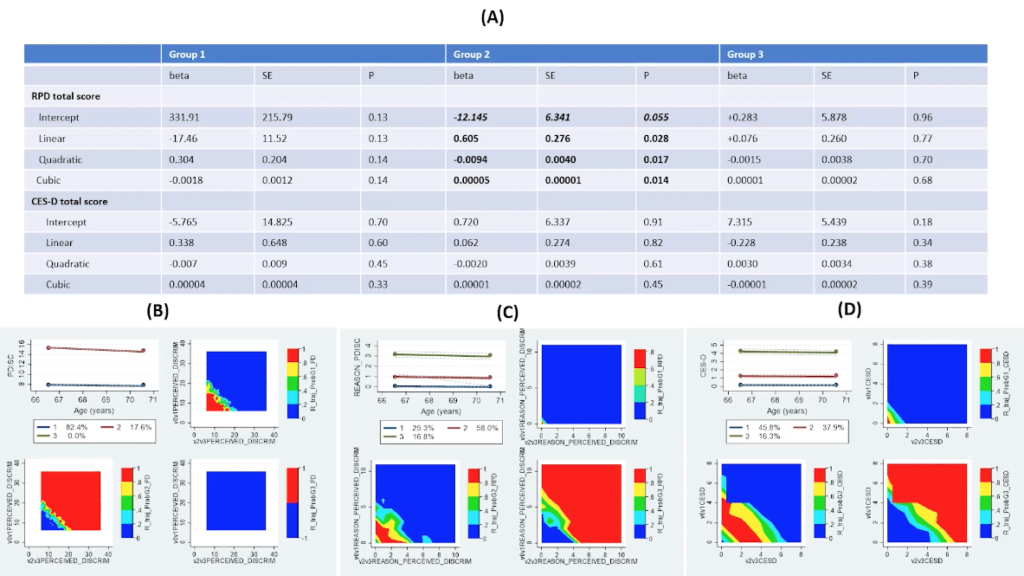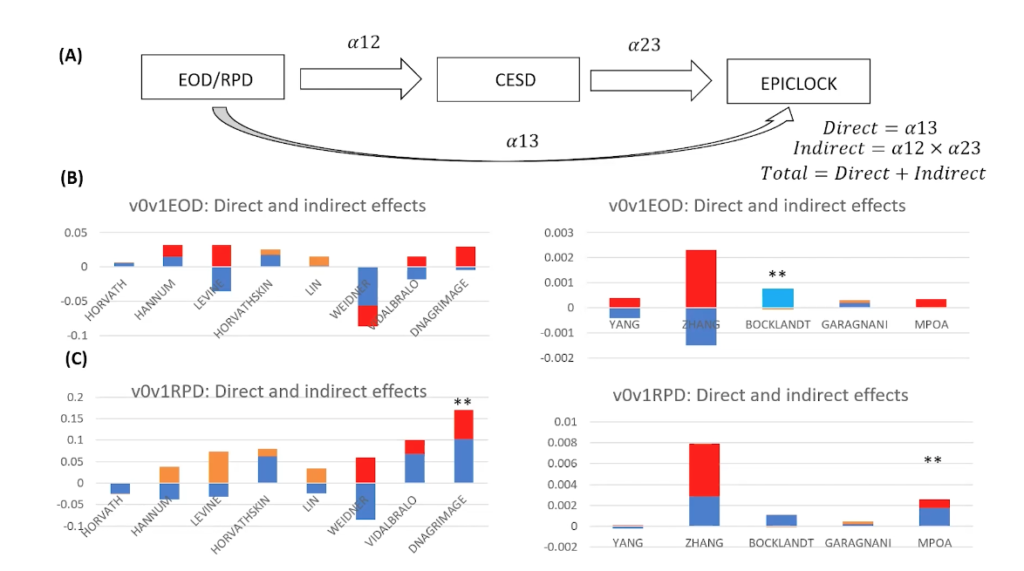Dr. May Beydoun from the Laboratory of Epidemiology and Population Sciences, NIA/NIH/IRP, in Baltimore, MD, discusses a research paper she co-authored that was published by Aging (Aging-US) as the cover for Volume 14, Issue 13, entitled, “Epigenetic clocks and their association with trajectories in perceived discrimination and depressive symptoms among US middle-aged and older adults.”
Behind the Study is a series of transcribed videos from researchers elaborating on their recent studies published by Aging (Aging-US). Visit the Aging (Aging-US) YouTube channel for more insights from outstanding authors.
—
Hello everyone. My name is May Beydoun and I am a staff scientist at the National Institute on Aging Intramural Research Program, Laboratory of Epidemiology and Population Sciences. My background is in epidemiology with special interest in nutrition and cognitive aging, as well as in social epidemiology.
I would like to present today our paper recently published in Aging US journal, Volume 14, issue number 13, entitled, “Epigenetic clocks and their association with trajectories in perceived discrimination and depressive symptoms among US middle-aged and older adults.”
Epigenetics impacts gene expression, genome integrity, and normal cell functions through heritable changes that are independent of DNA sequence modifications, such as mutations. DNA methylation is the most understood epigenetic mechanism and occurs through addition of a methyl group to a CPG island site in DNA.
Hyper methylation generally triggers gene expression silencing while the reverse is true for hypo methylation. Epigenetic alterations that are age related are summarized in this figure that you see here. DNA methylation is only one part of the puzzle and age is associated with locus-specific hyper methylation, but also with global hypo methylation. DNA methylation is also a mechanism by which exposure to adverse life circumstances and environments is linked to health outcomes related to aging.
Epigenetic clocks derived from DNA methylation are mathematical models reflecting human cell tissue and organ aging while being highly correlated with age across the lifespan and to increased age related chronic disease and all cause mortality risk. These clocks combine information for a small number of CPG islands, about 100 to 500, to produce indicators of aging. Methylation clocks are estimated in epigenetic years with the rationale that ticks of the clock represent aging.

The Horvath and Hannum epigenetic clocks are well established epigenetic age algorithm, whereby DNA methylation can be utilized to estimate biological aging at a cellular level. Since then, a number of other researchers have identified epigenetic clocks based on different genomic methylation changes that are related to age or health outcomes linked to age. However, few epidemiological studies have directly linked epigenetic clocks, or DNA methylation for that matter, to major depressive symptoms. Only two studies have directly or indirectly examined its association with elevated aggressive symptoms in general.
This figure shows the epigenetic clocks used in our present study. The number of CPG sites are used to generate those clocks using mathematical models and which phenotypes were used to generate them, as well as which other outcomes they are related to.
For instance, the Hannum clock is famous for its predictive ability for Alzheimer’s disease and cognitive aging in general, whereas DNAm GrimAge was generated to predict all cause mortality.
Methylation pace of aging clock similarly uses several biological, biochemical, hematological and clinical markers, but examined them longitudinally and for different age groups, as opposed to other clocks such as the Levine-PhenoAge clock.
This figure lists some of the risk factors for accelerating aging and those for decelerating aging. Stress is one key factor that leads to the accelerated aging phenotype. In our present study, we consider perceived discrimination as an important type of chronic stressor. In our current study, we used data from the health and retirement study, a subset of which had collected venous blood samples on respondents in 2016.
These samples were analyzed and 13 epigenetic clocks were derived using machine learning techniques. We generated two measures of perceived discrimination between the year 2010, 2016, that we call experience of discrimination based on commonly used scale and reasons for perceived discrimination, which was less commonly used, but reflects number of reasons for which a person feels discriminated against, up to 11 reasons. Risk and ethnicity are two separate reasons on that scale.
Depressive symptoms were measured using the eight item CES-D score, which is a very short form of the 20 item CES-D, across several ways of data. Epigenetic clocks were only available in 2016 on around 4,000 participants, aged 50 years or older, which constituted the limiting step for participant selection.
The study objective can be summarized by this figure with the key objective being to examine the mediating and potentially moderating effect of depressive symptoms and the potential association between perceived discrimination and the anti methylation epigenetic aging.
This participant flow chart shows how we went from all respondents throughout the years natural since 1992 to the final sample passing through the venous blood study sample that generated the epigenetic clocks. The final sample consisted of 2,806 individuals.
This scatter plot shows how each of the 13 epigenetic clocks correlated with each other and with chronological age. The correlation is a positive one as expected for 12 of the 13 clocks, whereas one clock named the Bocklandt clock is inversely related to the other measures. It is hypothesized that greater degree of discrimination would result in higher epigenetic aging or a positive relationship with 12 of the 13 clocks and an inverse one with the Bocklandt clock adjusting for chronological age and other factors.
We conducted many types of analysis in this study, including examining trajectories of EOD, RPD and CES-D and how they related individually to the 13 clocks. Using group based trajectory models, we uncovered two common groups for the experience of discrimination score, whereas for reasons for perceived discrimination and the CES-D depressive symptom score, three groups for chosen reflecting high, medium, and low levels of discrimination and depressive symptoms.

Our descriptive findings indicated that both point and trajectory exposures were patterned by sex and race, ethnicity as shown in this table with greater likelihood of depressive symptoms and elevated scores on extent of and reasons for perceived discrimination observed among females and among nonwhite individuals.
Seven of the 13 epigenetic clocks indicated greater epigenetic age among males. For a few clocks, epigenetic age was lower among non-white adults. Those included Horvath, Horvath 2, Levine and Hannum clocks. Upon adjustment for chronological age, other findings were uncovered in terms of differences in epigenetic age by sex and by race, ethnicity.
Now we come to our main study findings. What we found is that among females, sustained elevated depressive symptoms between 2010, 2016 was associated with greater biological age based on the DNA methylation, the Lin clock. The beta coefficient is positive. The P value is 0.009. This is based on the reduced model. These patterns were observed for elevated depressive symptoms, high versus low for GrimAge and MPOA DNA methylation markers, and the overall sample as well.
This is based on our results from group based trajectory models, which cluster depressive symptoms into high, medium and low, and were then used to predict the 13 epigenetic clocks measured in 2016. Those results are shown in table two and supplementary table two.
Another key finding is that overall, and mostly among females and non-Hispanic white participants, greater reasons for perceived discrimination in 2010, 2012 had a significant adverse total effect on epigenetic aging. This is based on the DNA GrimAge, MPOA and the Levine-PhenoAge, as well as the Horvath 2 clocks, so four clocks. We also found that 20 to 50% of this effect was being explained by a pure indirect effect through depressive symptoms in 2014, 2016.
This result is based on the four way decomposition model, which divided up the total effect of perceived discrimination into control direct effect interaction reference, mediated interaction, and pure indirect effect, which is also known as pure mediation. The detailed results are shown in supplementary table four of the manuscript portraying findings in the minimally adjusted models. Those models controlled for chronological age, sex, birth cohort, and race ethnicity.
We also found that overall and in white adults, the relationship of the Levine or PhenoAge clock, with perceived discrimination in general, both EOD and RPD was mediated through elevated depressive symptoms. These are also four way the composition model findings from table three and for showing fully adjusted models and supplementary table three and four showing results from minimally adjusted models.
Here we give examples from the overall population findings focusing mainly on the pure indirect effect. It is worth noting that in most cases, the total effect was not statistically significant with the exception of RPD for non-Hispanic white adults and the minimally adjusted model as shown in supplementary table four.
To validate our findings from four way decomposition models, we also carried out factual equation modeling, which are shown here. Figure three is actually showcased on the current issue of Aging US.

SEM models were used to decompose the total effect of perceived discrimination on epigenetic clocks through depressive symptoms and to direct and indirect effects. In this case, we’d had only two way decomposition.
The red portions of the graphics represents statistically significant indirect effect, while the light blue represents significant direct effects. The two stars represent a significant total effect on our SEM analysis shown here. We found with that overall and based on a minimally adjusted model, the total effect of experience of discrimination on the epigenetic clocks was largely nulled with the exception of the Bocklandt clock, which indicated as positive and largely direct effect, reflecting reduced biological age with perceived discrimination.
This is kind of a surprise. We were not expecting to find this, and it’s not mediated through CES-D score because that’s the direct effect that’s significant.
Contrast for the reasons for perceived discrimination, the total effect was statistically significant in the case of the methylation pace of aging clock and the DNA GrimAge, which was significantly mediated through the depressive symptoms CES-D total score. These later findings for MPOA and DNA GrimAge are in line with our four way decomposition models.
Here we list some of the study limitations. Those include selection bias, non differential mis-classification of predictors, residual confounding, and also inclusion of some predictors that may or may not be relevant to biologic aging. In light of these limitations listed here, we concluded that sustained elevation and depressive symptoms and reasons for perceived discrimination were associated with select measures of epigenetic aging consistently among women and among non-Hispanic white adults.
Furthermore, we found that depressive symptoms acted as a potential mediator and the reasons for perceived discrimination epigenetic clock association for a number of clocks, including DNA methylation GrimAge which is, as we said, predicts all cause mortality, and also methylation pace of aging clock.
I will end my presentation by acknowledging NIANIHIRP for supporting this work and all HRS participant staff and investigators, as well as NIA internal reviewers. I also include some declaration of interests here.
I would like to thank Aging US journal for inviting me to present my work. Thank you for your attention.
Click here to read the full study published by Aging (Aging-US).
AGING (AGING-US) VIDEOS: YouTube | LabTube | Aging-US.com
—
Aging (Aging-US) is an open-access journal that publishes research papers bi-monthly in all fields of aging research and other topics. These papers are available to read at no cost to readers on Aging-us.com. Open-access journals offer information that has the potential to benefit our societies from the inside out and may be shared with friends, neighbors, colleagues, and other researchers, far and wide.
For media inquiries, please contact [email protected].
